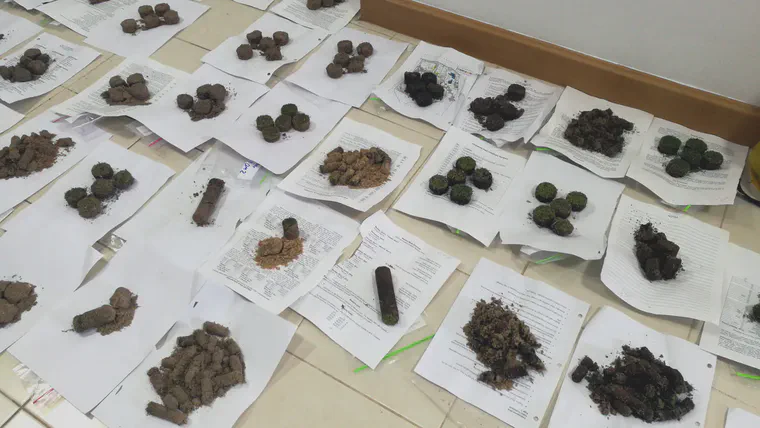Reminder to air dry soil samples
I air dry soil samples before sending them to a lab for analysis. The effect of this drying is to stop soil microbial activity and to stop ion exchange reactions. Allowing the samples to air dry also reduces the mass of the sample prior to shipping.

There’s an update from Bryan Rutter and Dorivar Ruiz Diaz at Kansas State University that shows how large the difference can be for soil nitrate when microbial activity is not stopped.
They collected a large soil sample and mixed it.
This soil was then placed into sample bags, which were randomly assigned to different combinations of storage temperature and duration. One set of samples was kept in a refrigerator while the other set was kept in a cargo box in a truck bed. To monitor changes in soil test levels over time, three sample bags were removed from the refrigerator and truck box every two days (48 hours) and tested in the lab.
After four days, the sample kept in the truck bed had double the nitrate of the refrigerated sample. After ten days, the nitrate in the truck bed sample was three times the level it was in the refrigerated sample.
 by Rutter and Diaz showing how the nitrate can increase dramatically if a soil is not kept refrigerated (or dried) after removal from the ground.](/post/reminder-to-air-dry-soil-samples/Nitrogen_Fig_hubd350661f688324ac5cc9e2594f2bc2a_191393_340e7697e6ead48973df542278c29897.webp)
Some of their take home points and recommendations include:
- Mineralization and nitrification led to more than a 3x increase in soil test nitrate in the undried and unrefrigerated “Truck Cargo Box” samples
- Soil test nitrogen did not change substantially in refrigerated samples.
- Improper handling and storage of soil samples can dramatically reduce soil test accuracy and may lead to under or overfertilizing crops.
- If same-day submission [to the lab] is not possible, samples should be air-dried or placed in a refrigerator set at 40 degrees F or less.
I did a survey in early 2022 and was surprised to find that 78.5% of the respondents do not dry soil samples before sending them to the lab.
If you can get the sample to the laboratory on the same day it was removed from the ground, and the drying process will start at the laboratory immediately, then skip drying the samples. Otherwise, I would start drying the samples myself the same day they were removed from the ground.
Sign up here to receive ATC’s free soil testing newsletter, with updates about the four components of soil testing—sampling, laboratory analysis, interpretation, and recommendation.